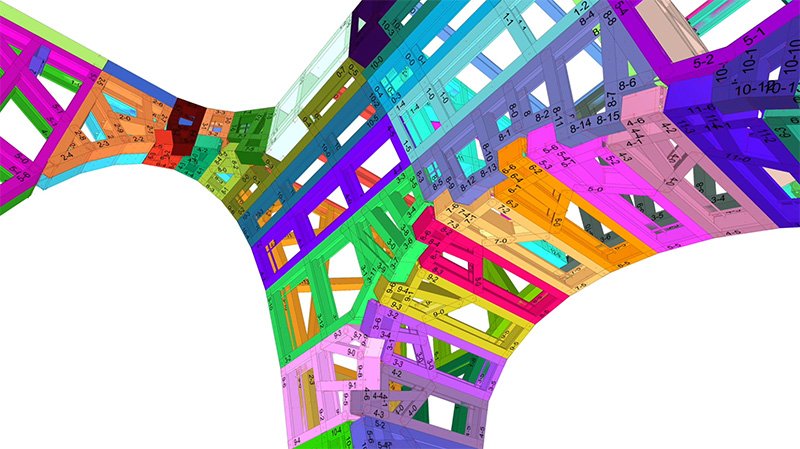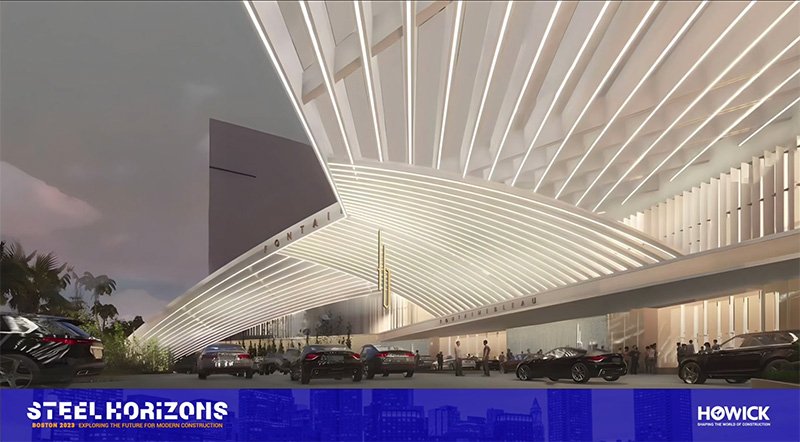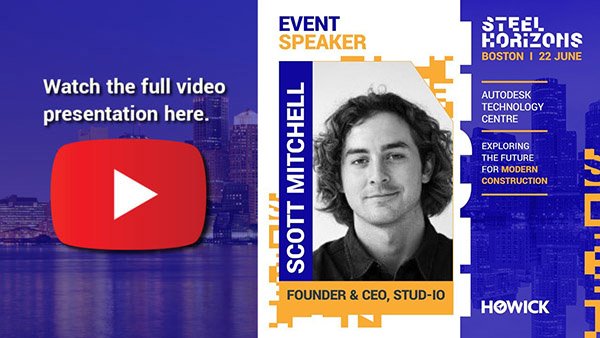STEEL HORIZONS | BOSTON Speaker Series 5 - Hacking the Howick: Part Two
Step into the future of industrialized construction with our exclusive STEEL HORIZONS | BOSTON speaker series. In each post, we showcase one speaker from our STEEL HORIZONS | BOSTON 2023 event and share their insights about the future of construction.
Next is Scott Mitchell, Founder and CEO of STUD-IO - a computational construction company. Scott works to bridge STUD-IO’s software development with its project consulting, enabling some of the most complex construction projects today. In his presentation he explores how you can get more out of machines, like the Howick FRAMATM, using smart software.
Six years ago, Scott Mitchell gave a presentation as an intern at Autodesk. Hacking the Howick: Part One covered his research exploring the idea that the Howick machine could do much more than people thought possible, including complex, 3D geometry. In the interim, Scott founded STUD-IO and now, six years later, Scott has used those ideas to contribute to some of the world’s most elaborate construction projects.
In Part Two of Hacking the Howick, he explains how his ideas came to life - and proves that smart software can push the boundaries of what is possible with any machine.
You can do more with your machines
The machines we already have are hiding plenty of unlocked potential, explains Scott:
“You can do more with your machines than you think is possible. There may be some line where you think there’s nothing possible past that with the machines you already have, but we think that’s totally untrue.”
“You may not need any major investment to get there, you may just need smarter software.”
This is important because when we leverage complex geometry, we enable improved sustainability and energy performance - plus optimization of materials and space.
Scott’s company, STUD-IO, develops automated design to fabrication software to help unlock the full potential of machines like the Howick FRAMATM. STUD-IO’s core software, StudFinder, is built with the key constraints of the Howick machine at its core, but with a little creativity it allows you to push those boundaries:
“Anything that you can imagine of what’s physically possible with the machine you can design and build it at scale with STUD-IO.”
The software helps automate every step of the construction process, from design and architectural modelling, to fabrication and even assembly. The idea is that you can give it any shape you want and the software will automate generation of that fabrication model, including assembly and installation information.
Pushing the boundaries of the Howick machine
Scott offers an example of when the Howick machine, which is built to fabricate straight studs, was used to create curved studs:
“It’s not a feature you even have to pay for. It just exists. If you have something curved and give it to StudFinder, it’ll put all those operations in the correct location to give you the exact shape you’re building.”

“We’re misusing the machine in a sense. It wasn’t designed to do this, it just happens to be possible given what the machine is already capable of.”
Scott says you can get as crazy as you want with your designs in StudFinder and the idea is to preserve design intent using the same process across all projects, making the machines you already have highly cost-effective.
Building the Fontainebleau Casino and Resort in Las Vegas
Scott provides a number of examples of StudFinder and the Howick machine pushing construction boundaries in the real world, including construction of the porte-cochère at the Fontainebleau Casino in Las Vegas. This gigantic structure on the Vegas strip was 500 feet across with 100,000 sq. ft. of finish and 436 individual modules. Every stud, every connection, every screw hole - plus fabrication, assembly and installation were driven entirely by StudFinder. Once each component was fabricated “installation is basically foolproof, regardless of the geometry, no need for a tape measure, no need for a jig, nothing like that,” explains Scott.

“We’re basically adding everything we can into the software to make it feel like putting a set of Lego together.”
The results?
The results of using StudFinder are impressive - not only does the project look incredible, it far exceeded client expectations. The actual assembly time for the Fontainebleau project was just one third of what was budgeted, delivering huge value for cost and schedule.
“The whole point of this is to use machines that are meant to make standardized parts, but we can make customized parts with them, which means they’re cost effective … And we can preserve design intent without some crazy investment in hardware,” Scott said.
Scott finishes by saying that STUD-IO has come a long way in the last six years:
“I think we’ve proven, especially with the Howick machine, that there’s a whole lot more that you can do than you might think. We’re extremely excited for the next six years and look forward to Part Three eventually!”
Was this article insightful? Share it
